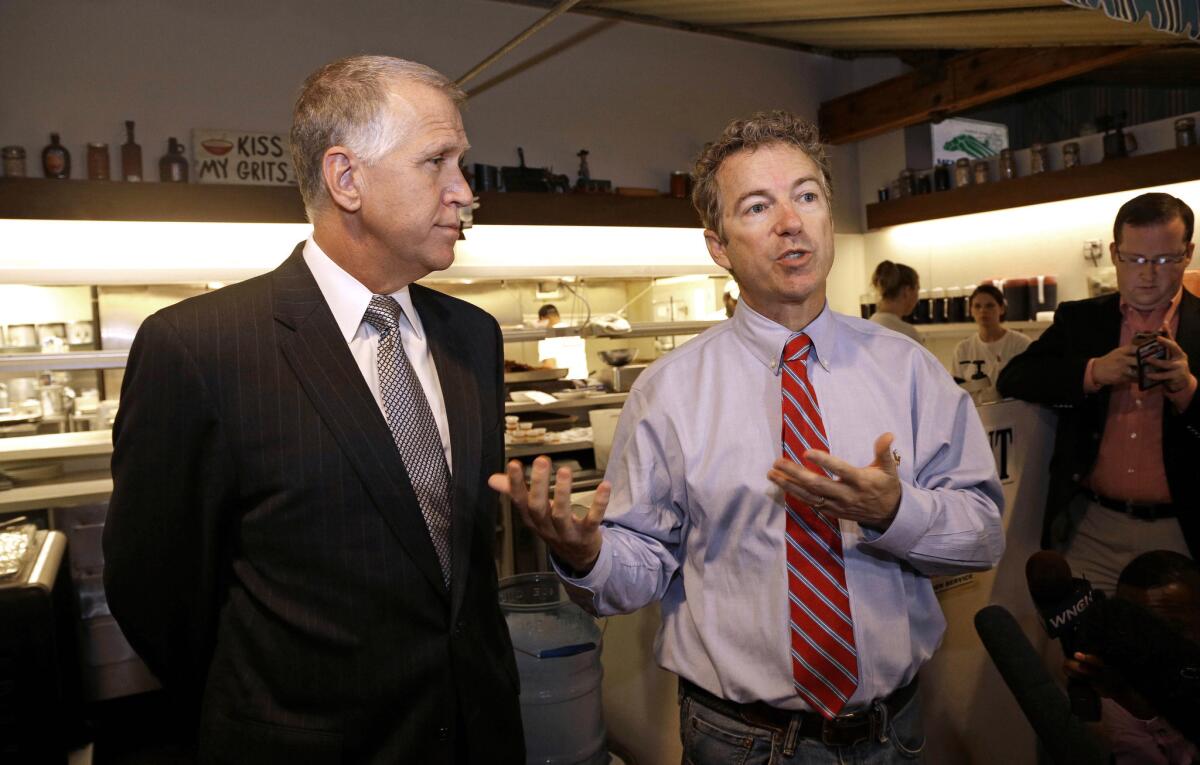Opinion: What message will voters send Washington in November? Maybe nothing

- Share via
Reporting from Washington — In my column on Wednesday, I wrote that most of the campaigns for this November’s Senate elections haven’t set voters on fire. Instead of a “Seinfeld election,” the television show that comes to mind is “Curb Your Enthusiasm”.
“Except for a few high-intensity states, we’re in for an apathetic election with low voter turnout,” I forecast. “That will help Republicans win more close races, and make it more likely that they pick up the six additional Senate seats they need to gain a majority. If that happens, GOP leaders will claim that the voters have given them a mandate — but without a true conservative surge, it won’t be much of a mandate at all.”
------------
FOR THE RECORD
Oct. 1:, 9:25 p.m.: A previous version of this post said the “enthusiasm gap” between Republicans and Democrats is roughly as big this year as it was in 2014. The year should have been 2010.
------------
Here’s more of the polling data that backs up that argument:
Voter enthusiasm in general is lower than it was in 2010, when Republicans won a resounding victory. (That’s what we mean when we talk about a “wave election.”) At this point in 2010, the Wall Street Journal/NBC poll found that 50% of voters rated their interest in the upcoming election at 10 on a scale of 10. Last month, a similar poll (co-sponsored by the Annenberg Public Policy Center) found only 44% were equally excited this year.
What counts on Election Day, of course, is whether one side’s voters are more enthusiastic (and thus more likely to turn out) than the other’s. It’s not a foolproof way to predict turnout, because it’s always possible for the less-enthusiastic party to narrow the gap with a turnout operation, but it’s still pretty good.
On that count, Republicans have a clear advantage. In the NBC/Journal/Annenberg poll, 54% of Republicans said they’re “highly interested” in the November elections, compared with 44% of Democrats. That “enthusiasm gap” is roughly as big this year as it was in 2010.
But will that translate to a clear mandate for Republican policies? Here’s a final excerpt from that poll: When voters were asked whether they intended their vote this fall to serve as a message to Washington, only 13% said they’d be voting as a signal of support to Republicans in Congress. A larger number, 17%, said they’d be voting as a signal of disapproval for President Obama.
Those were all presumably Republican voters. Meanwhile, only 10% said they’d be voting in support of Democrats in Congress, and only 15% said they’d be voting in support of Obama.
The biggest number: Voters who say they aren’t sending a signal to Washington either way -- 42%.
Follow Doyle McManus on Twitter @doylemcmanus and Google+
More to Read
A cure for the common opinion
Get thought-provoking perspectives with our weekly newsletter.
You may occasionally receive promotional content from the Los Angeles Times.










